-
 John Mallon
24My takeaways from the AARST-ANSI Standards Committee: The process is very deliberate and exercises one’s consensus building skills. The completed document is something foreign to each committee member’s initial vision. The documents are the product of much debate, soul-searching and compromise but that reflects the requirements of diverse committee member positions and stakeholder reviews. No one is totally satisfied with the final product but the process teaches that the points of view and needs of the Radon Community are diverse. I met new colleagues and learned so much that I had been unaware of about the greater radon community. I recommend joining the Standards process, the experience is invaluable.
John Mallon
24My takeaways from the AARST-ANSI Standards Committee: The process is very deliberate and exercises one’s consensus building skills. The completed document is something foreign to each committee member’s initial vision. The documents are the product of much debate, soul-searching and compromise but that reflects the requirements of diverse committee member positions and stakeholder reviews. No one is totally satisfied with the final product but the process teaches that the points of view and needs of the Radon Community are diverse. I met new colleagues and learned so much that I had been unaware of about the greater radon community. I recommend joining the Standards process, the experience is invaluable.
My Father told me: “A camel is a horse designed by a committee” -
 Steven Reichert
20Given that this post is the 122nd one in this conversation, the topic of alarms is far from being resolved.
Steven Reichert
20Given that this post is the 122nd one in this conversation, the topic of alarms is far from being resolved. -
 Andrew Costigan
34Has there ever been a list of “approved” active notification devices distributed to contractors since this standard took effect?
Andrew Costigan
34Has there ever been a list of “approved” active notification devices distributed to contractors since this standard took effect? -
 John Daly
1It’s really upsetting how this is an enforced aspect of a radon system without any work arounds for Minnesota’s freezing problems. A decent number of homes warrant externally routed systems because of numerous reasons, and I have been installing these on every system ever since I was in the first batch of failing inspections, and I have to explain to the client that “this is probably going to wake up you in the middle of the night, but the department of health is enforcing it, so here’s how you remove the battery when that happens.” This is not well thought out, almost every mitigator I know is up in arms about it, and I agree with David Smith, Andy Costigan, Randy Weestrand, Steve Reichert, and everyone else against it, there are many more issues brought up that haven’t been considered when making this a mandate.
John Daly
1It’s really upsetting how this is an enforced aspect of a radon system without any work arounds for Minnesota’s freezing problems. A decent number of homes warrant externally routed systems because of numerous reasons, and I have been installing these on every system ever since I was in the first batch of failing inspections, and I have to explain to the client that “this is probably going to wake up you in the middle of the night, but the department of health is enforcing it, so here’s how you remove the battery when that happens.” This is not well thought out, almost every mitigator I know is up in arms about it, and I agree with David Smith, Andy Costigan, Randy Weestrand, Steve Reichert, and everyone else against it, there are many more issues brought up that haven’t been considered when making this a mandate. -
 Dane
3Please let me start by saying that I do not feel this List Serve platform is an acceptable venue for any company to advertise or promote their products however I can provide some information that will address most of the concerns posted here.
Dane
3Please let me start by saying that I do not feel this List Serve platform is an acceptable venue for any company to advertise or promote their products however I can provide some information that will address most of the concerns posted here.
I and my associates have been developing a new line of radon system alarms for over a year now. They will be made available after this years wintertime field testing results are completed. We believe our alarms address most if not all of the valid concerns mentioned here.
For example, all of our alarms include a 2 year warranty however have been designed with a life expectancy of approximately 10 years. We will be offering 7 models with various features and benefits. Most plug-in but some operate by battery and some have a built-in pressure/flow gauge. Our optional low voltage ac/dc unit can be plugged in up to 40 feet away allowing installer to plug into a separate circuit without the need for an electrician. A few of our alarms include remotes that can be located up to 100 feet away with custom models available up to 250 feet.
Sadly, we were not able to develop a unit cheap enough to compete with the Chinese alarm but we feel the additional cost for our basic unit will be easily offset by creating fewer customer complaints and providing a much longer life span. All except for our most elaborate alarms are intended to retail for less than $100.
The problem with freeze-ups has not been corrected with any of our alarms however, one of our silent alarms may be an option for some. It will be offered with a declaration that states:
“Note: This Radon System Silent Alarm is only to be purchased if alarm location is guaranteed to be seen numerous times a day. If a silent alarm is needed for structures such as healthcare facilities, schools, multi-family dwellings or other similar institutions, please select our silent alarm with secondary remote unit that can be placed in an appropriate location; e.g. building supervisor or manager’s office.”
As fellow mitigators, we understand the concern regarding unwanted phone calls resulting from false alarms but with all due respect, we take exception to ANSI/AARST SGM-SF-2017 9.2.2 that recommends alarms with “Delayed notification in terms of hours or even weeks.” Our company feels that selling alarms with a delayed notification diminishes the value of a radon system and undermines our life’s work. That same Standard states that delayed notifications would help with “False” notifications that include “power outages, low pressure or low air flow.” In the event of a power outage, our battery units have been designed to be easily silenced while our plug-in units obviously can not sound an alarm without power. We believe that any radon mitigation system that is not providing the pressure or air flow intended by the installer is not a “false” problem and should be of great concern and although occurring infrequently, justifies the ANSI/AARST standard that makes alarms a requirement.
In the near future, we anticipate other manufacturers to begin offering other alarm options and we look forward to the improvements and developments that competition brings. We wish them and all of us luck. We would like to thank everyone involved that volunteer so much time in the development of our industry standards. Please keep up the good work.
We could use everyones help. Our company will be providing an OM&M Document with each of our alarms and we would like to address wintertime problems in that information.If anyone has any recommendations as to the wording that we could include, please let us know. We would love to hear from you. Thank you. -
 Bob Wood
95Sorry i lapsed into plumbing jargon rather than polite society terminology. What i meant to say was: i would like to thank and support all of those people who volunteered their time to create these standard documents and they will only get better if those that use the document on a daily basis can step up and get involved in improving it. I would caution anyone who is considering volunteering that successful committee work is the art of compromise and reminding yourself continually that the standard is here to serve the general public not to serve the companies who use it every day.
Bob Wood
95Sorry i lapsed into plumbing jargon rather than polite society terminology. What i meant to say was: i would like to thank and support all of those people who volunteered their time to create these standard documents and they will only get better if those that use the document on a daily basis can step up and get involved in improving it. I would caution anyone who is considering volunteering that successful committee work is the art of compromise and reminding yourself continually that the standard is here to serve the general public not to serve the companies who use it every day. -
 Bruce Schaepe
6Dane, can you identify the company that you are associated with? I'm really happy to see a supplier of these products participating in the discussion.
Bruce Schaepe
6Dane, can you identify the company that you are associated with? I'm really happy to see a supplier of these products participating in the discussion. -
 Randy Weestrand
32I was taught years ago to tell my clients to check their manometer quarterly- when they changed their furnace filter. The current ANSI / AARST standard says we shall advise them to check it monthly. I'm being a little facetious, but should the standard be changed, advising them to check it three times a day?
Randy Weestrand
32I was taught years ago to tell my clients to check their manometer quarterly- when they changed their furnace filter. The current ANSI / AARST standard says we shall advise them to check it monthly. I'm being a little facetious, but should the standard be changed, advising them to check it three times a day?
In a more serious vein, I could support a $10 to $15 battery operated red light / green light silent 'alarm' with an expected life greater than the expected life of the fan. Or, a fan that gave an hourly 'chirp' when it quit spinning.
I wonder how many clients will call and say "Randy, the manometer shows that the fan you told me might last 20 years or more is still running, but please send your crew by- I'd like to pay you $350 to replace the active alarm for the third time". -
 Adam Michels
16Alarms are just a bad idea. I have seen no valid argument for increasing costs and adding potential headaches for customers and migrators. Increased costs, decrease participation....that is the reality.
Adam Michels
16Alarms are just a bad idea. I have seen no valid argument for increasing costs and adding potential headaches for customers and migrators. Increased costs, decrease participation....that is the reality. -
 Bob Wood
95I just took our Mercedes van in to be serviced. Why? Because the van automated system said it was time for a service check. Do you want a recurring business model or a one and done business model........
Bob Wood
95I just took our Mercedes van in to be serviced. Why? Because the van automated system said it was time for a service check. Do you want a recurring business model or a one and done business model........
With alarms going in........ you offer to change out alarm as it is past it's service life. (the dealership makes more in selling service than they do in selling cars), ask anyone who owns a dealership. I had dealership call me on my way home to ask if they could change the diesel filters as they were at the end of their service life. I don't want to tell you what it cost in Canadian dollars, what am going to do as a business that relies on that truck say no? Yes service is messy if you don't have people who do it, it messes up schedule and doesn't allow for scheduling your crews to do what is your primary business installing systems but if you had 2000 systems installed and you could sell a 200$ system check with upsell of replacing parts (alarms) and a ongoing yearly long term test to ensure radon system was functional how many places could be hit in a day? 5-10? that's another 1000-2000$/ day for a man and a truck or fill in work if you are not busy 5 days a week. Alarms protect people who would not know that the great system you installed had quit working. -
 Steven Reichert
20Bob Wood, Are you suggesting that in addition installing non-existent, reliable and cost effective alarms, mitigation companies alter their business models to include paid service agreements to service those alarms? Also, when your van had warranty work done by the dealership, Mercedes paid them for that work. When was the last time your fan supplier paid you to replace a fan under warranty?
Steven Reichert
20Bob Wood, Are you suggesting that in addition installing non-existent, reliable and cost effective alarms, mitigation companies alter their business models to include paid service agreements to service those alarms? Also, when your van had warranty work done by the dealership, Mercedes paid them for that work. When was the last time your fan supplier paid you to replace a fan under warranty? -
 Admin
34Everyone - Standards are LIVING DOCUMENTS! The Executive Stakeholders Committee has instructed the Mitigation Committee to review the whole section regarding active notification monitors because feedback, including some from state program directors, convinced them it should be.
Admin
34Everyone - Standards are LIVING DOCUMENTS! The Executive Stakeholders Committee has instructed the Mitigation Committee to review the whole section regarding active notification monitors because feedback, including some from state program directors, convinced them it should be.
A healthy discussion about the technical merits for, against, and in between is welcome here. But, please keep comments constructive and refrain from personal attacks. There are no bad guys here. People working on the committees as well as those following due process to bring forth issues and concerns all have good intentions. Let the process work. -
 Nicole Chazaud
36Hello All,
Nicole Chazaud
36Hello All,
With a large number of new users here, I would like to remind users: Commercial Promotions are not permitted on the Radon List Serv Thank you for asking. -
 Bob Wood
95Steven and all; I was not advocating for service agreement that did not pay me, i am advocating to offer a service that includes a annual certified test (alpha track) and a equipment check, Fan is warrantied by the manufacturer through us for five years, labour is only warrantied for 1 year. We provide the service for a fee. Home is continuously being tested pick up radon test drop off new one inspect the fan is running and at same utube setting. Mail off test device email them the results. Who are they going to recommend when their friend needs a radon mitigator? When they move across town who are they going to use? Alarm goes off they call if it is -20 for 4-10 days. My people know what to say................... if alarm goes off and its not -20 we send a service person out. if system is frozen we install epdm insulation in attic and above the roof and install self regulating heat trace on the piping. if we offered it as an upgrade and were turned down at time of install we charge for time and materials. if we did not offer it it is my companies fault and i have to eat the cost. i want to offer customer service in a way that keeps customers recommending me to friends neighbours even Aunt Millie who they do not even like. it is the cheapest form of marketing i can do.
Bob Wood
95Steven and all; I was not advocating for service agreement that did not pay me, i am advocating to offer a service that includes a annual certified test (alpha track) and a equipment check, Fan is warrantied by the manufacturer through us for five years, labour is only warrantied for 1 year. We provide the service for a fee. Home is continuously being tested pick up radon test drop off new one inspect the fan is running and at same utube setting. Mail off test device email them the results. Who are they going to recommend when their friend needs a radon mitigator? When they move across town who are they going to use? Alarm goes off they call if it is -20 for 4-10 days. My people know what to say................... if alarm goes off and its not -20 we send a service person out. if system is frozen we install epdm insulation in attic and above the roof and install self regulating heat trace on the piping. if we offered it as an upgrade and were turned down at time of install we charge for time and materials. if we did not offer it it is my companies fault and i have to eat the cost. i want to offer customer service in a way that keeps customers recommending me to friends neighbours even Aunt Millie who they do not even like. it is the cheapest form of marketing i can do.
BTW the Mercedes dealership did none of the work under warranty as i have too many miles on my sprinter to qualify ( and boy do they know how to charge for their parts and labour) while they were very professional about it nothing lasts forever and it is a cost of doing business. They are not one and done business. -
 Tony McDonald
37Is that what we are doing bitching? I beg to differ. — Andrew Costigan
Tony McDonald
37Is that what we are doing bitching? I beg to differ. — Andrew Costigan
Unlike 15 years ago, the standards committee is actually writing enforceable laws, at least for us in Minnesota. Who's the fox and who's the hen-house? — Steven Reichert
Andrew and Steven,
I urge you to get some basic education on this subject. Your responses imply you are ignorant of the rule promulgation process. These incorrect statements are not helping your case. All of the information below is publicly available via your favorite search engine.
Contrary to what you may believe, I assert the ANSI/AARST process is SUPERIOR to other code standard writing bodies. Let's test this assertion against the biggest ANSI construction code writing body - The International Code Council (ICC). This organization is considered by many as the gold standard for construction code promulgation. They produce a wide variety of standards for residential and commercial codes. In Minnesota alone, they publish your residential building code, commercial building code, Energy code, ADA code, Mechanical code, Conservation code and Fire prevention code.
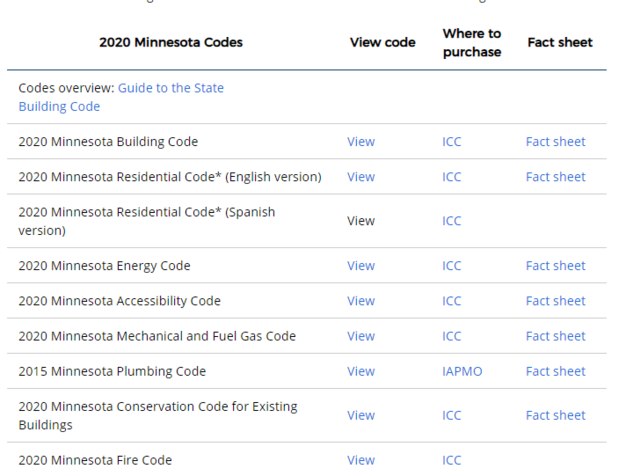
While they allow a wide variety of stakeholder groups to join their organization and participate in committee work, ONLY GOVERNMENT REGULATORS ARE ALLOWED TO VOTE. Contractors do not get to vote. Screenshot of the voting summary below. Attached is the PDF of the entire ICC voting rules.
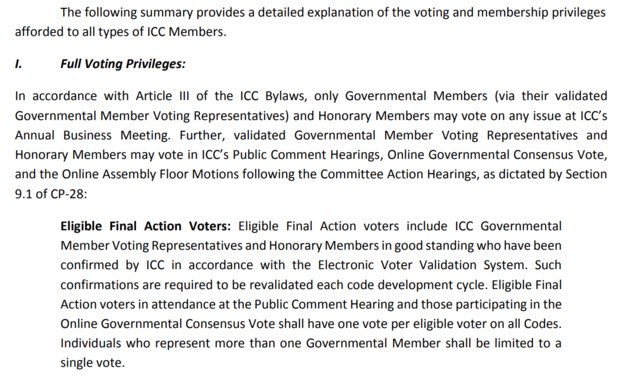
Compare that to AARST/ANSI where every stakeholder group on the committee has a vote, even contractors. Beyond that, the stakeholder groups have roughly the same number of votes. The opinions of regulators are not superior to any other group. There are no foxes or hens (or even hen houses) on the committee. Just a collection of professionals trying to create a quality standard. I encourage you to learn about the ANSI/AARST process. You may be surprised at how balanced and accessible the process is for everyone involved.Attachment ICC Voting Rights Summary
(145K)
ICC Voting Rights Summary
(145K)
-
 Steven Reichert
20Tony, I wasn't trying to denigrate the hard work of the committee, or comment with it's superior or inferior to other standards groups. I have great deal of respect for the work being done. My point is that unlike any other licensed states, that I'm aware of, Minnesota, directly incorporates by law the AASRT/ANSI standards which in fact make it the "law" of the land here. The current MDH rules compel them to use and enforce the standard without exception. Unlike MDH, DOLA, our building officials, have discretion to which ICC codes to incorporate, enforce or change regardless of their process and who get's to vote on them. Bottom line, if the ANSI/AARST standard says we have to wear purple socks, purple socks it is. Same goes for alarms.
Steven Reichert
20Tony, I wasn't trying to denigrate the hard work of the committee, or comment with it's superior or inferior to other standards groups. I have great deal of respect for the work being done. My point is that unlike any other licensed states, that I'm aware of, Minnesota, directly incorporates by law the AASRT/ANSI standards which in fact make it the "law" of the land here. The current MDH rules compel them to use and enforce the standard without exception. Unlike MDH, DOLA, our building officials, have discretion to which ICC codes to incorporate, enforce or change regardless of their process and who get's to vote on them. Bottom line, if the ANSI/AARST standard says we have to wear purple socks, purple socks it is. Same goes for alarms. -
 Andrew Costigan
34Tony - I just got finished re-reading all 32 of your comments on here. You certainly are book smart - that is undeniable. I think mitigators in MN however are just asking that some common sense be thrown into the decision making process. And with the same people from 2015-2017 to present day are still involved and voting I really don't think there ever was a chance to delay or make this a "should" requirement. Was there truly anything we could have done to - like you say "help our case".
Andrew Costigan
34Tony - I just got finished re-reading all 32 of your comments on here. You certainly are book smart - that is undeniable. I think mitigators in MN however are just asking that some common sense be thrown into the decision making process. And with the same people from 2015-2017 to present day are still involved and voting I really don't think there ever was a chance to delay or make this a "should" requirement. Was there truly anything we could have done to - like you say "help our case".
Right now there are about 7-8 products on the market that would classify as an "active notification device" 99% of them have been around for more then a decade. Dane recently brought up that he has developed 7 new alarms that will be hitting the market this year that he has been doing field testing with. And I am certain many more will be available this year from different companies. 2021 will definitely be the year the market will be flooded with these new devices. So instead of MN being the testing ground / guinea pigs (since we are the only state legally required to use them as of now). Would it really be to much to ask for a 12 month delay or less? This would give us a chance to integrate them into our installations - see what works and what doesn't. Most mitigators were unaware this requirement even existed and honestly I don't think mitigators in MN even realized SGM-SF 2017 was even going to become the law of the land here until recently. None of the other licensed states have adopted it - so why would MN think we would be different? -
 Bruce Schaepe
6Thank you Tony for providing information about the various ICC building codes adopted in Minnesota that are governed by Minnesota Department of Labor and Industry. However, please be aware that the radon code for Minnesota professionals is governed by the Minnesota Department of Health (MDH) through Statute and MDH-promulgated Rule, not code, as provided on their website and reprinted below.
Bruce Schaepe
6Thank you Tony for providing information about the various ICC building codes adopted in Minnesota that are governed by Minnesota Department of Labor and Industry. However, please be aware that the radon code for Minnesota professionals is governed by the Minnesota Department of Health (MDH) through Statute and MDH-promulgated Rule, not code, as provided on their website and reprinted below.
Radon Laws, Rules and Standards
The Minnesota Radon Licensing Act (Minnesota Statutes 144.4961) was passed by the legislature and signed into law in May 2015. This act gives Minnesota Department of Health (MDH) the authority to write rules and enforce laws related to the radon industry in the state.
Professionals and companies that measure for radon, mitigate for radon or perform radon analysis in the State of Minnesota are required to be licensed and use system tags.
Statutes
144.4961 Minnesota Radon Licensing Act
Rules
4620.7000 Purpose
4620.7050 Applicability
4620.7100 Definitions
4620.7200 Radon Measurement Professional License
4620.7250 Radon Mitigation Company License
4620.7300 Radon Mitigation Professional License
4620.7350 Radon Analysis Laboratory License
4620.7400 Standards of Conduct
4620.7500 Incorporation by Reference; Required Work Practices for Radon Measurement and Mitigation and Measurement Devices
4620.7600 Radon System Tag Requirements
4620.7700 Approval of Initial Training and Continuing Education Courses
4620.7800 Reporting Requirements
4620.7900 Inspections and Enforcement
4620.7950 Variance to Radon Licensing Rules
The Rules went into effect on January 1, 2019 and MDH began conducting contractor audits in 2020.
The radon Rules in Minnesota directly reference the current ANSI/AARST documents with no modifications (M.R. 4620.7500). Perhaps the recourse of mitigation professionals in Minnesota, like myself, is to get MDH to modify the Rule to make an exception for the use of active alarms until it is proven that "good" active alarms are available. -
 Bob Wood
95Let me start with I am very envious of the fact you have State Law that controls radon mitigators and what they do. I am tired of losing work to supposed mitigators who do not follow the rules, do not know what they are doing, are uncertified handyman, with no knowledge of building code, building envelope science, radiation protection (for their workers). They are taking money out of the pockets of my trained and certified employees and not serving our clients well (I get them as clients when radon mitigation doesn't work out)
Bob Wood
95Let me start with I am very envious of the fact you have State Law that controls radon mitigators and what they do. I am tired of losing work to supposed mitigators who do not follow the rules, do not know what they are doing, are uncertified handyman, with no knowledge of building code, building envelope science, radiation protection (for their workers). They are taking money out of the pockets of my trained and certified employees and not serving our clients well (I get them as clients when radon mitigation doesn't work out)
So my questions to the group is do the current radon alarms Alarm when the radon system fails because it is cold outside, and let the homeowner know that they are being exposed to high levels of radon? From the comments i am hearing the answer is yes. So they are doing what they are supposed to! How do you change your business model to meet this new reality? Is this an opportunity profit more? Or is this a cost you must absorb driving profits down?
I am not sure from this discussion if you are more concerned about radon alarms or changing your business model to accommodate enforcement of the new rules.
Does the Ansi AARST document require insulation when piping is subject to freezing? Is this expensive and a tough upsell? My answer is maybe but i don't know your market. My market is concerned homeowners most are two income professionals who care about price tag but...... if we are doing a garage exhaust we highly recommend EPDM insulation and a self activating heat cable (if you scroll back i gave amazon link). If they do not buy it I don't send a radon tech out without them agreeing to pay for it. -
 Steven Reichert
20Bob - The issue isn't about adapting a business model to alarms as a value add service. Also,AARST standard does not require pipe insulation but our MN building code does require R-8 insulation for vent pipes in attics above conditioned space. The fact is, suppliers have not made available proven and affordable alarm solutions that comply to the AARST standard. For a given niche, expensive hardwired alarms are a good fit. In fact, we are adding one to installation in a multi-million dollar home this week. It requires us bringing in my licensed electrician and pulling extra permits, costs an average homeowner who doesn't fly private can afford. (Yes the homeowner does own a Gulfstream)
Steven Reichert
20Bob - The issue isn't about adapting a business model to alarms as a value add service. Also,AARST standard does not require pipe insulation but our MN building code does require R-8 insulation for vent pipes in attics above conditioned space. The fact is, suppliers have not made available proven and affordable alarm solutions that comply to the AARST standard. For a given niche, expensive hardwired alarms are a good fit. In fact, we are adding one to installation in a multi-million dollar home this week. It requires us bringing in my licensed electrician and pulling extra permits, costs an average homeowner who doesn't fly private can afford. (Yes the homeowner does own a Gulfstream) -
 Admin
34Steven - The Standards DO require pipe insulation. As per the ANSI-AARST SGM-2017
Admin
34Steven - The Standards DO require pipe insulation. As per the ANSI-AARST SGM-2017
7.2.10 Protect ducts from the elements (insulation):
As required by codes or climate conditions, duct piping shall be provided with insulation.
7.2.10.1 Where it is likely on a regular basis (e.g., annually or every few years) that freezing temperatures will result in ice buildup within duct piping that would adversely affect system performance, insulation shall be provided for duct piping and fans. The insulation shall be protected from the elements and have an R-value of no less than 4. Greater R-values can be appropriate for meeting this need, depending upon climate extremes.
7.2.10.2 Where it is likely that condensation will occur on the exterior surface of duct piping to the extent damage would occur to adjacent building materials, duct piping shall be provided with insulation having an external vapor barrier and an R-value of not less than 1.8. -
 Michelle Festa
11Here is an excerpt about the Change Request process. It looks like AARST gets 13 months to respond, by which time everyone that objects to active alarms will give up. Or go out of business.
Michelle Festa
11Here is an excerpt about the Change Request process. It looks like AARST gets 13 months to respond, by which time everyone that objects to active alarms will give up. Or go out of business.
BYLAWS OF THE AMERICAN ASSOCIATION OF
Annex E
Continuous Maintenance Procedures
CONTINUOUS MAINTENANCE OF STANDARDS
E-1 Change proposals may be submitted at any time by the public using the procedures indicated in the published standard or as otherwise published by the ESC.
*Substantive changes to a document or portions thereof that are processed under the continuous maintenance option shall undergo the same due process procedures as revisions under periodic maintenance, in addition to the procedures in Article 7 and this Annex E.
E-2 Processing Change Proposals
*Staff shall forward proposed changes received to the Chair of the subcommittee responsible for the document's content, action and response. The Chair or supporting staff shall communicate with the proposer as needed to clarify the intent of the proposal.
E-2.1 Responding to the Proposer
*The Chair or staff committee responder shall draft a recommended response, including any potential changes to the standard and submit it to the subcommittee. Options for
subcommittee responses are limited to:
a) proposed change accepted for public review without modification;
b) proposed change accepted for public review with modification;
c) proposed change accepted for further study; and
d) proposed change rejected.
E-2.1.1 The response shall provide reasons for any recommendation other than option a) “accepted for public review without modification.”
E-2.1.2 Option c) “proposed change accepted for further study” shall not be used unless the further study can be completed within 7 months of approval of the option. Upon
completion of the further study, the subcommittee shall approve response option a,
b, or d above.
E-2.1.3 The Chair shall ensure that the approved committee response is conveyed to the proposer within thirteen months of receipt of the proposed change. -
 Bob Wood
95Ok so as i understand the issue "standard does require insulation" within the building where could be exposed to freezing (ie the attic).
Bob Wood
95Ok so as i understand the issue "standard does require insulation" within the building where could be exposed to freezing (ie the attic).
"Standard does require Alarms"
Alarms go off when pipe freezes customers call and complain when alarms go off
Alarms are that truly work are expensive. But they are expensive for all installers.
So the solution that best protects consumers is????
I do not believe that a complaint about the standard to the standard board is going to be successful.
one of my competitors slips 6" insulated duct around his pipes in attic it looks terrible but he says fast and cheaper and because no joints no possibility of sweating in summer, creating mold issues if you think a few calls about freezing are painful try being the cause of mold in an attic. -
 Andrew Costigan
34Whether you are for the alarm requirement or against it - this issue has brought to light just how little impact mitigators truly have on decisions that effect this industry and it should be a grave concern to everyone involved. I will be curious what the mitigation committee decides on the alarm requirement in the next coming months. But - it’s just a hunch that I have that little will change in anyone’s favor.
Andrew Costigan
34Whether you are for the alarm requirement or against it - this issue has brought to light just how little impact mitigators truly have on decisions that effect this industry and it should be a grave concern to everyone involved. I will be curious what the mitigation committee decides on the alarm requirement in the next coming months. But - it’s just a hunch that I have that little will change in anyone’s favor. -
 Jesse Green
4We have received a handful of freeze-up calls in the last week. The lows here in Minnesota have been in the teens below zero and the highs around zero for the last week or so.
Jesse Green
4We have received a handful of freeze-up calls in the last week. The lows here in Minnesota have been in the teens below zero and the highs around zero for the last week or so.
I have never really like the idea of telling customers to wait until it warms up, so we decided to try a few experiments to fix the freeze-up issue.
We installed roof deicing cable on two houses with frozen external systems—one on Thursday and another last night.
The first one can be seen in this video we posted to YouTube. https://youtu.be/BunkB3zGgUw
The second install wasn't so easy as we had to take the pipe off the house, run five gallons of hot water through it, and then fish the heating cable through with a sewer camera.
I am happy to report both systems have returned to their initial static pressure.
I am hoping this system can be improved upon and hardwired.
Do you have any thoughts on this?
Have you found a better way to prevent system freeze-ups?
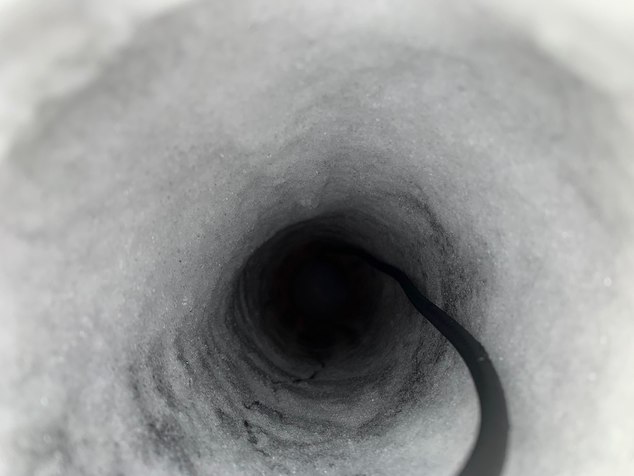
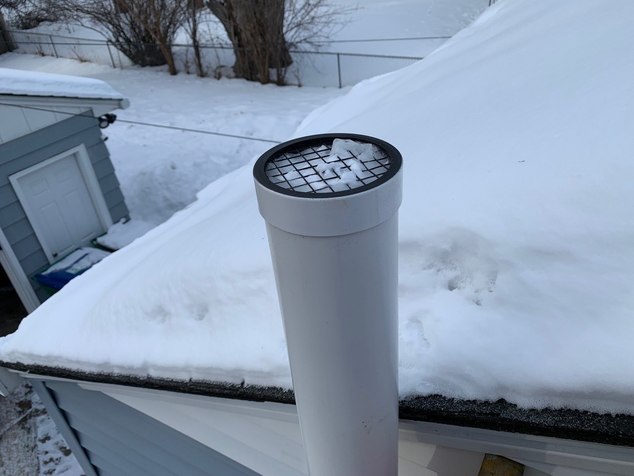
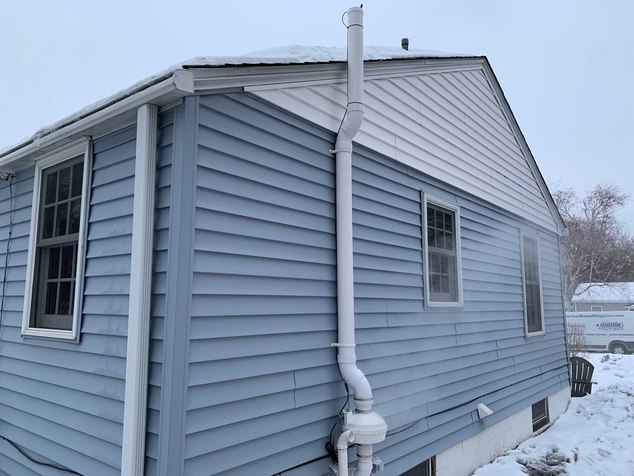
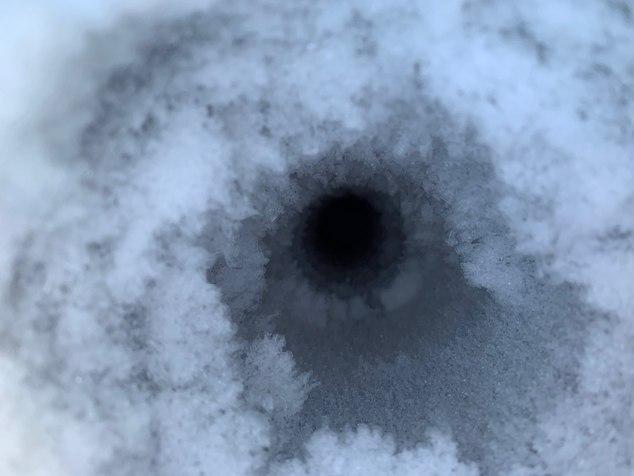
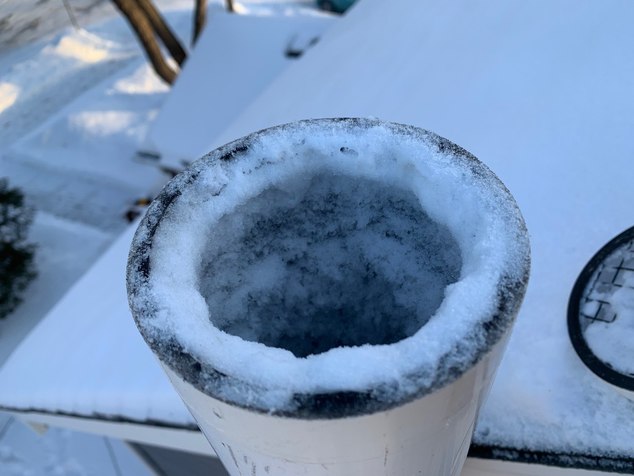
-
 Bill Brodhead
44Yesterday a Consortium meeting included 18 people on the call for 2 hours. It is an amazing group willing to dedicate their valuable time often multiple times a month. After other issues were hashed about, time was given to discuss alarms and freeze ups one more time. Major parts of meetings have taken up this subject in the past so this is not a new subject or issue. Any radon company that has been in business for years knows of cases where homeowners were not aware their radon fans were dead for months if not years and they certainly know customers who have no idea how to read a u tube. This issue is of course nation wide.
Bill Brodhead
44Yesterday a Consortium meeting included 18 people on the call for 2 hours. It is an amazing group willing to dedicate their valuable time often multiple times a month. After other issues were hashed about, time was given to discuss alarms and freeze ups one more time. Major parts of meetings have taken up this subject in the past so this is not a new subject or issue. Any radon company that has been in business for years knows of cases where homeowners were not aware their radon fans were dead for months if not years and they certainly know customers who have no idea how to read a u tube. This issue is of course nation wide.
After much discussion with Jesse Green and his consulting with a representative from one heat tape company that makes a product called FrostGuard to unfreeze gutters it appears to me that one solution for areas of frigid weather is to install a double box at all outside fan locations that includes a fan switch and a weatherproof outlet.
A heat tape could then be easily installed at the time of installation or at a later date. The heat tape could be given as an option on a contract for additional cost or included as standard equipment. Of course installed later would be an extra cost depending upon if the pipe is frozen but having offered it as an option on the original contract releaves responsibility for installing it for free.
The heat cable is available in different lengths and is 1/2" by 1/4". Tape incudes a 6 foot lead to a plug. A 3/4" hole could be drilled in the pipe above the fan. A fish cable could pull the tape to the top of the pipe where it is secured and looped down to give extra heat at the exhaust. The hole would sealed with silicone caulking. Replacing a worn out tape is straightforward assuming weather is above sub zero.
The tape uses 4 watts a foot at 65 degrees and 9 watts a foot at 0 degrees. The home owner has the option to unplug the tape to save electric cost. If the pipe does freeze solid I have no idea how long it would take to unfreeze a pipe already frozen once the tape is energized.
I think ithe issue is whether a company in a frigid climate is willing to add the expense of an outlet at the fan as standard equipment. This could be marketed as feature of your system that other companies don't provide. The heat cable then becomes a billable option installed during the installation or at a later date.
The same option could apply for fans in attics however insulating the pipe and fan in the attic assuming the pipe runs are short would be an option if an insulated roof pipe flashing is used. Heat tape used in the attic would likely be less expensive to install and the shortest length available would reduce electric cost.
Bill -
 Doug Taylor
7I have no problem with increasing regulatory requirements to make safer systems and better mitigators, but those who feel the need to increase the regs should also be required to educate the public on the realistic cost of the systems which they are requiring. For example: Looking at SOSradon...the old $800 TO $1500 numbers which have been used for years are still out there. If you are paying your taxes, business license, workmans comp, liability insurance on business and vehicles, decent pay for workers, licensed electrical work etc.....who can put in even a simple system for $800 - $1500 and make a reasonable profit ....maybe a discussion for a different day.
Doug Taylor
7I have no problem with increasing regulatory requirements to make safer systems and better mitigators, but those who feel the need to increase the regs should also be required to educate the public on the realistic cost of the systems which they are requiring. For example: Looking at SOSradon...the old $800 TO $1500 numbers which have been used for years are still out there. If you are paying your taxes, business license, workmans comp, liability insurance on business and vehicles, decent pay for workers, licensed electrical work etc.....who can put in even a simple system for $800 - $1500 and make a reasonable profit ....maybe a discussion for a different day.
Welcome to the Radon ListServ!
Join Radon ListServ Categories that pique your interests and area of expertise.
More Discussions
- Terms of Service
- Useful Hints and Tips
- Sign In
- © 2025 Radon ListServ























